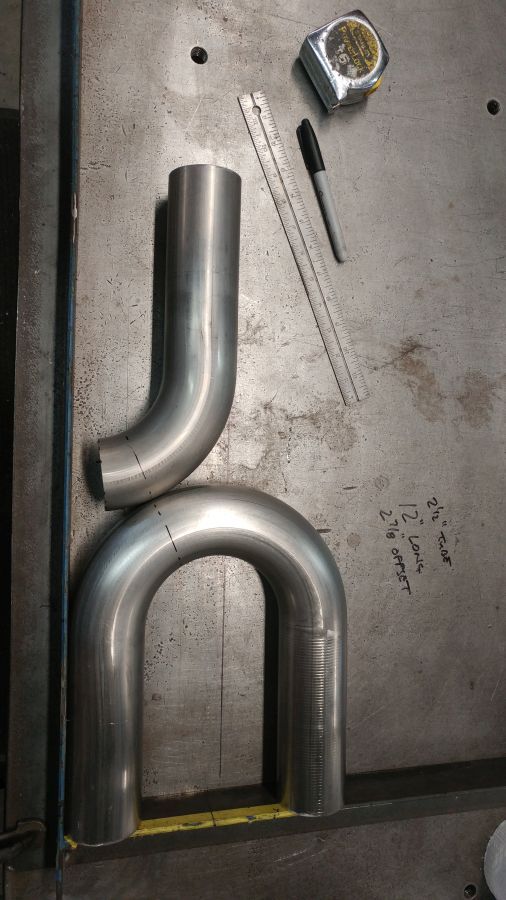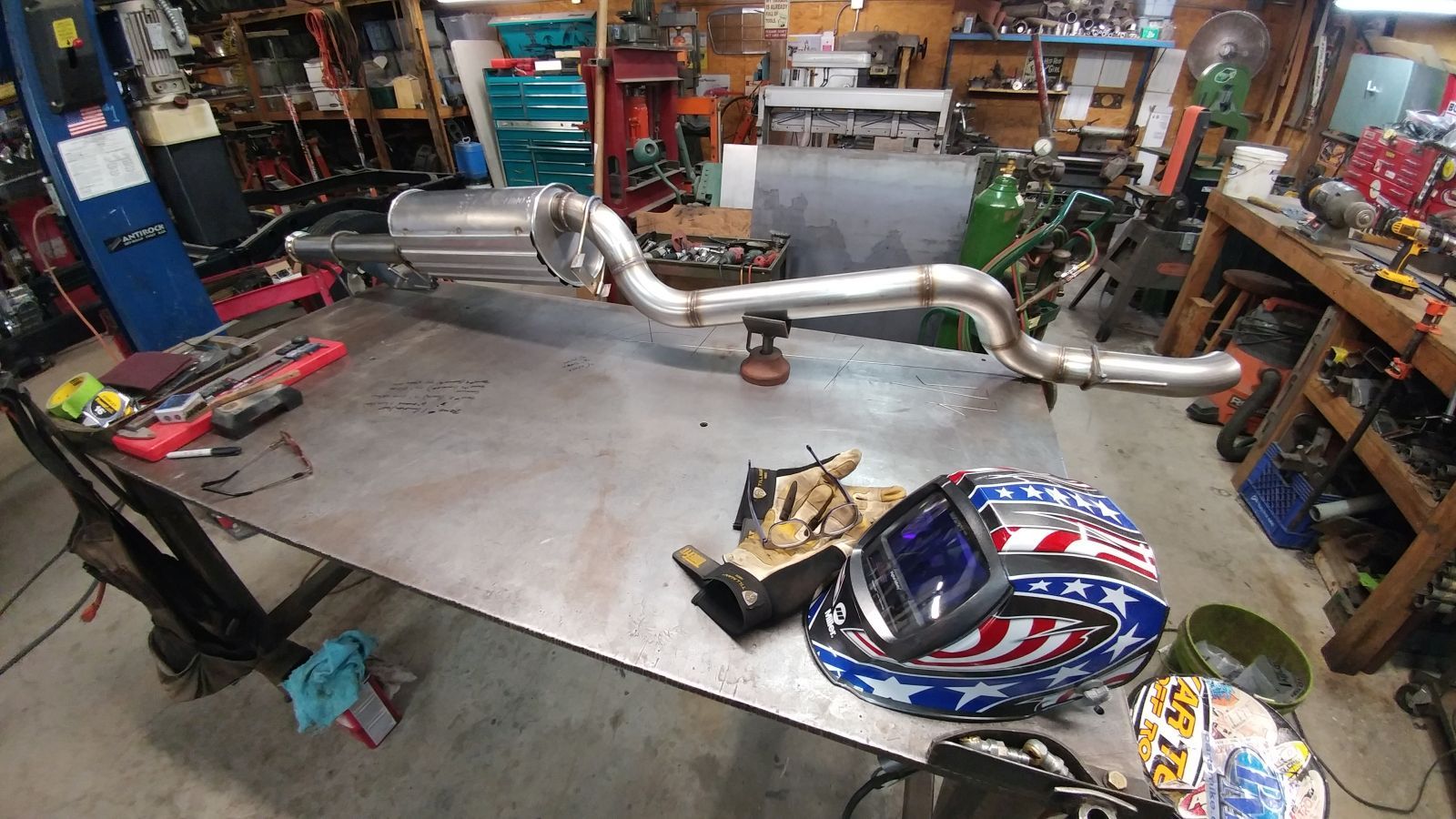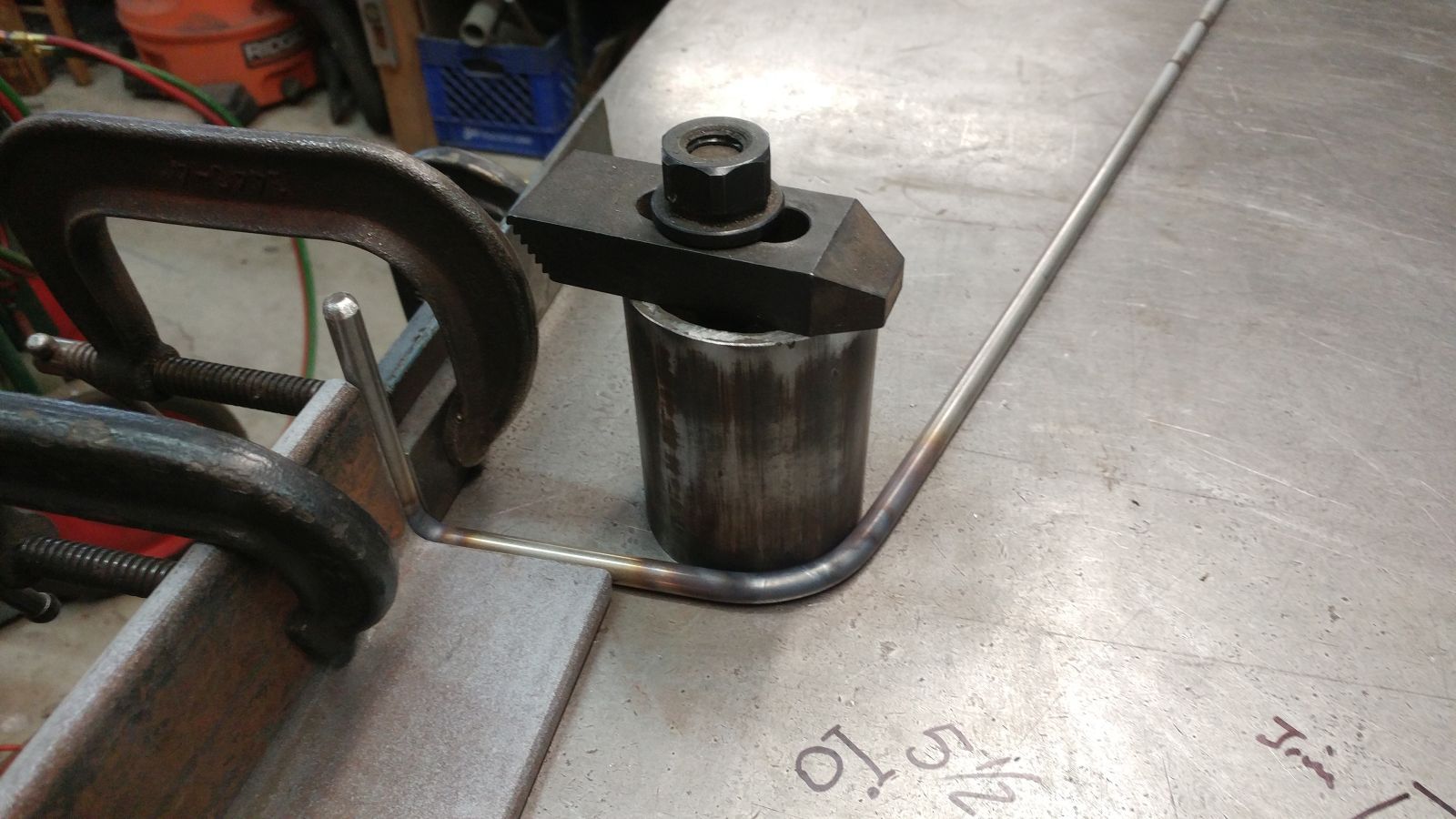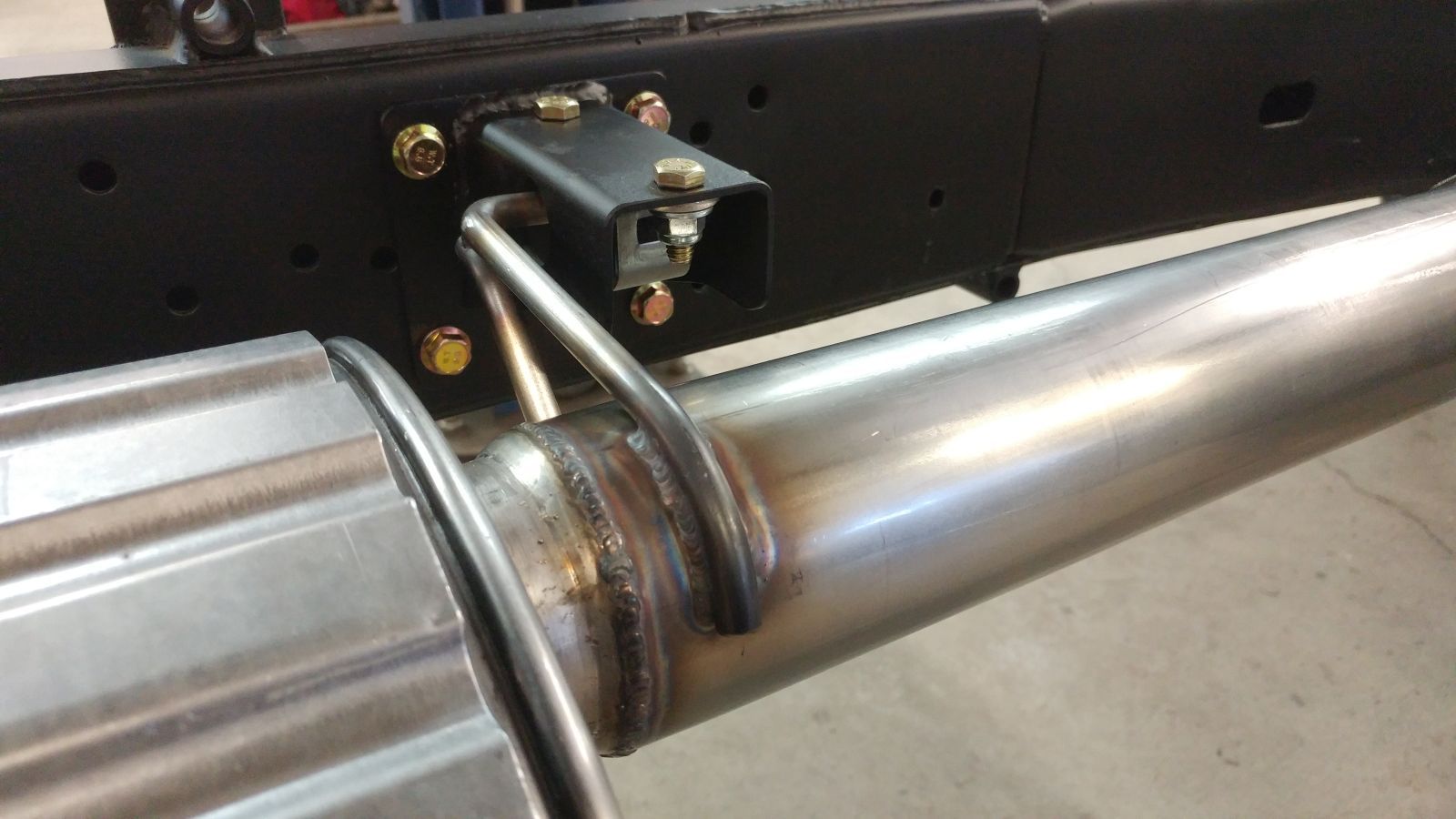You are using an out of date browser. It may not display this or other websites correctly.
You should upgrade or use an alternative browser.
You should upgrade or use an alternative browser.
FJ62 Reimagined - Restoration - Modern Drivetrain - Stoffregen Motorsports
- Thread starter Stoffregen Motorsports
- Start date
Stoffregen Motorsports
Explorer
Stoffregen Motorsports
Explorer
Stoffregen Motorsports
Explorer
Stoffregen Motorsports
Explorer
I was given a tip a while back from another friend in the industry about the fitment of the GM wiring. It isn't really ideal. I do hate to tear into something if I don't have to, but cutting open the GM wiring allows me to adjust the fit. Yes, it is a time consuming pain in the butt.
Again, trying to achieve assembly line efficiency, I do jump around a bit on these builds. Ideally, all of the chassis wiring will be complete before the body is dropped onto the chassis.


I also like to keep OEM style connectors wherever possible.

Again, trying to achieve assembly line efficiency, I do jump around a bit on these builds. Ideally, all of the chassis wiring will be complete before the body is dropped onto the chassis.


I also like to keep OEM style connectors wherever possible.

Stoffregen Motorsports
Explorer
Stoffregen Motorsports
Explorer
Just one less thing to worry about later.Excellent work and I love the drill idea for the PS pump.
Jack
Thanks guys.
Stoffregen Motorsports
Explorer
With more important things going on in the world today, building trucks seems so not important. Nowhere on the scale of every day essential requirements. Unless you drive a Freightliner for a living or are stuck down in Baja on an epic journey, trying to get back home, you probably don't need your truck right now. That said, a lot of you are probably not working, or working from home. Trying to find ways to keep things exciting while you're on lockdown. I can give you some updates to help with that. My small contribution to this sad and scary situation.
Stoffregen Motorsports
Explorer
Exhaust systems - They perform many functions. Most importantly, an exhaust system should be tailored to the horsepower and torque curve of a specific engine. There is no "one size fits all". Secondly, there's the emissions controls related to controlling chemical components spewed out into the atmosphere. A good exhaust system will help ensure that all gasses are burned up before they leave the tailpipe. Lastly, the sound created by an exhuast system can evoke feelings in your soul. Whether they bring you back to your childhood, a day at the road races, or the sound of a farm tractor, or bring to the front more recent feelings, like the jealousy you experience when you see and hear and feel a 2019 Corvette ZR1 blow by you on it's way down the canyon, the sound from an exhaust pipe is as important to vehicle onwership as the color of the paint on the body. Probably more-so. Every vehicle enthusiast has some connection to the sound they hear from their exhaust.
From my lengthy preamble, hopefully you get the sense of the importance I put on this system.
When I built my first FJ60 equipped with a 5.3 LS, the first thought I had was that I wanted to stick to the original size and layout that the GM engineers designed for that engine. The logic being that I wanted to engine to run as originally intended. Let me make an important distinction here. I am not referring to the GM V8 of old small block V8 technology. LS V8 engines fall into what I refer to as modern technology, nothing like the original V8 as developed by Duntov back in 1955. Modern technology, as applied to the Vortec V8 starting in 1995 was a game changer for GM. In an era of overhead cams, tweo designers from GM worked in their spare time to keep the overhead valve, cam in block V8 alive. Here are a couple articles that discuss the development of the GM Vortec LS engine. Pretty interesting reading and sheds some light on the importance this engine had to GM.
https://www.hotrod.com/articles/development-of-the-ls1-engine-changed-everything/
https://www.drivingline.com/articles/evolution-of-the-ls-the-engine-that-changed-the-world/
Anyway... back to the FJ. Sticking to the keep-it-simple philosophy, the two banks of the engine are merged into a single three inch pipe, just as you would find on a Cadillac Escalade. To improve flow and power, even just a little bit, the muffler is sourced from a Chevrolet 3500 HD truck. A work truck. Combined with the three inch pipe, this muffler gives a mild throaty sound at cruising speed, but wakes up when you lay your foot into the pedal.
Of course this system has to fit inside the FJ60/62 frame, and that's where the problems lie. As a rule, you are not allowed to modify a CARB approved part and maintain compliance, but these parts, as supplied by GM, do not fit the FJ60/62 frame. The first time I encountered that problem, I admit to being a bit scared. What would I do if I couldn't get the vehicle to pass certification? Give the client his money back??? Having a working relationship with the BAR referee helped me develop the front half of the exhaust system to fit inside the frame and comply with regulations. It was a struggle, but one that paid off.
Time for some pics.
Measuring and cutting mandrel bends requires trigonometry, or experience. I rely on experience...


Welding the pieces together requires time with a TIG torch. That's all, just time.


From my lengthy preamble, hopefully you get the sense of the importance I put on this system.
When I built my first FJ60 equipped with a 5.3 LS, the first thought I had was that I wanted to stick to the original size and layout that the GM engineers designed for that engine. The logic being that I wanted to engine to run as originally intended. Let me make an important distinction here. I am not referring to the GM V8 of old small block V8 technology. LS V8 engines fall into what I refer to as modern technology, nothing like the original V8 as developed by Duntov back in 1955. Modern technology, as applied to the Vortec V8 starting in 1995 was a game changer for GM. In an era of overhead cams, tweo designers from GM worked in their spare time to keep the overhead valve, cam in block V8 alive. Here are a couple articles that discuss the development of the GM Vortec LS engine. Pretty interesting reading and sheds some light on the importance this engine had to GM.
https://www.hotrod.com/articles/development-of-the-ls1-engine-changed-everything/
https://www.drivingline.com/articles/evolution-of-the-ls-the-engine-that-changed-the-world/
Anyway... back to the FJ. Sticking to the keep-it-simple philosophy, the two banks of the engine are merged into a single three inch pipe, just as you would find on a Cadillac Escalade. To improve flow and power, even just a little bit, the muffler is sourced from a Chevrolet 3500 HD truck. A work truck. Combined with the three inch pipe, this muffler gives a mild throaty sound at cruising speed, but wakes up when you lay your foot into the pedal.
Of course this system has to fit inside the FJ60/62 frame, and that's where the problems lie. As a rule, you are not allowed to modify a CARB approved part and maintain compliance, but these parts, as supplied by GM, do not fit the FJ60/62 frame. The first time I encountered that problem, I admit to being a bit scared. What would I do if I couldn't get the vehicle to pass certification? Give the client his money back??? Having a working relationship with the BAR referee helped me develop the front half of the exhaust system to fit inside the frame and comply with regulations. It was a struggle, but one that paid off.
Time for some pics.
Measuring and cutting mandrel bends requires trigonometry, or experience. I rely on experience...


Welding the pieces together requires time with a TIG torch. That's all, just time.


Stoffregen Motorsports
Explorer
Exhaust hangers also need some degree of engineering. I fall back on OEM engineering (once again) to have a system that allows flex, but also securely holds the tubing in place. Nobody wants to hear resonating or rattles coming from under the body of the truck.
Hangers made from 3/8" stainless rod and bent to shape.

Then welded to the right places along the tubing.



Hangers made from 3/8" stainless rod and bent to shape.

Then welded to the right places along the tubing.



Stoffregen Motorsports
Explorer
Similar threads
- Replies
- 19
- Views
- 4K
- Replies
- 28
- Views
- 2K
Forum statistics
Members online
- gnel
- Recon1342
- benSan
- Romer
- RVflyfish
- beretta
- Cgswimmer24
- WU7X
- Zeep
- Fork-N-Road
- 406to417
- TommyG
- 80t0ylc
- Gravelette
- Bigly
- Keyne
- hyak
- Kess
- Iron Peak Campers
- blacklbzbeauty
- RealRigsRattle
- desertexplorer
- roaming.nomads
- luthj
- Fishenough
- fatmab
- mxdevon
- simple
- NOPEC
- Spencer for Hire
- mistermustard
- retiredruralmailman
- Podunk
- Fadeagray
- mark5280
Total: 1,341 (members: 38, guests: 1,303)



















